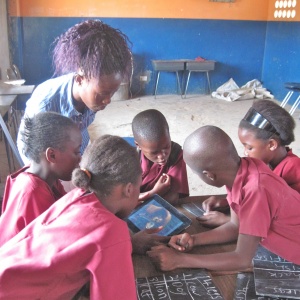OER4Schools/activities/Cumulative talk: Difference between revisions
From OER in Education
JanetBlair (talk | contribs) (added info on cumulative talk) |
No edit summary |
||
| Line 10: | Line 10: | ||
* Children repeat and elaborate each other's ideas, but they don't evaluate them carefully. | * Children repeat and elaborate each other's ideas, but they don't evaluate them carefully. | ||
The following document outlines the three types of talk that children are mostly engaged with in the classroom and provides examples:[http://thinkingtogether.educ.cam.ac.uk/resources/5_examples_of_talk_in_groups.pdf | The following document outlines the three types of talk that children are mostly engaged with in the classroom and provides examples:[http://thinkingtogether.educ.cam.ac.uk/resources/5_examples_of_talk_in_groups.pdf Three kinds of talk]. | ||
Latest revision as of 15:24, 2 January 2013
| Resource details | |
| Title | Cumulative talk |
| Topic | |
| Teaching approach | |
| Learning Objectives | |
| Format / structure | |
| Subject | |
| Age of students / grade | |
| Table of contents | |
| Additional Resources/material needed | |
| Useful information | |
| Related ORBIT Wiki Resources | |
| Other (e.g. time frame) | |
| Files and resources to view and download | |
| Acknowledgement | This resource is part of the OER4Schools programme. |
| License | |
Cumulative talk is co operative talk and can lead to knowledge construction through the sharing of ideas. It is limited from an educational point of view in that it does not produce critically grounded knowledge. Its real value is that it promotes group/whole class harmony whilst allowing ground rules for the more meaningful exploratory talk to become established. It also has the added benefit of allowing pupils to increase in confidence as they speak without being challenged at first.
Cumulative talk is talk in which…
- Everyone simply accepts and agrees with what other people say.
- Children do use talk to share knowledge, but they do so in an uncritical way.
- Children repeat and elaborate each other's ideas, but they don't evaluate them carefully.
The following document outlines the three types of talk that children are mostly engaged with in the classroom and provides examples:Three kinds of talk.

